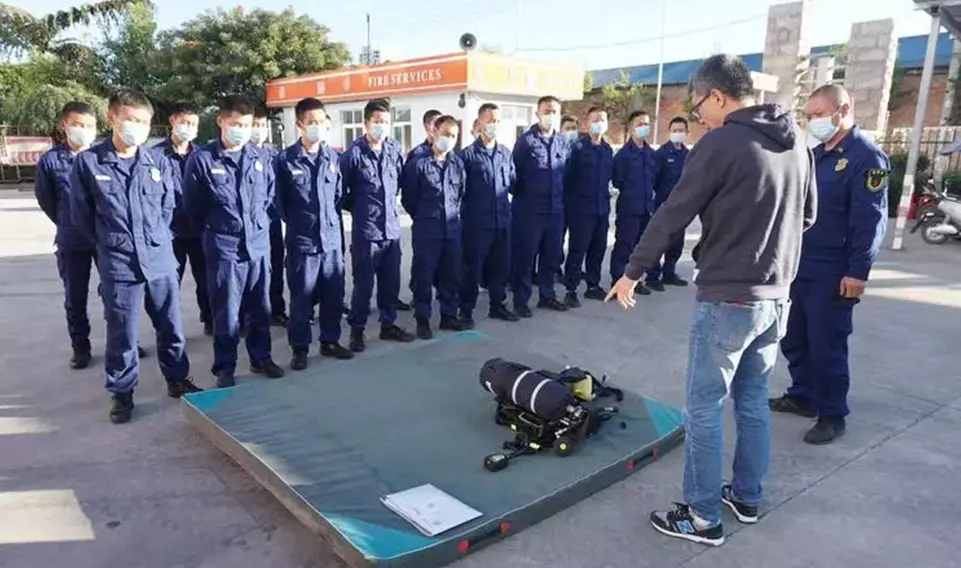
What are the key points of air respirator maintenance
The maintenance of air respirators is a key link to ensure its stable performance and extend its service life. The following are the key points of air respirator maintenance:
1. Storage environmentLocation selection: It should be stored in a convenient, clean and hygienic place, avoiding dust, direct sunlight, too cold (below five degrees Celsius) or too hot (above thirty degrees Celsius) environment, and contact with harmful chemicals.
Prevent damage: Avoid collision, scratches, knocks, high temperature baking, high cold freezing and exposure to the sun during storage, and pay special attention to the mask not being squeezed.
2. Regular inspectionAppearance inspection: Regularly check the surface of the gas cylinder, backboard, shoulder strap, waist belt, valve port and O-ring of the pressure reducing valve, trachea, air valve bayonet, mask sealing ring, eyepiece, mask strap and other parts to ensure that they are intact.
Cylinder air pressure inspection: Close the air demand valve, unscrew the cylinder valve, and observe whether the pressure of the barometer is within the qualified range (such as 24MPa~30MPa), and the pressure drop per minute does not exceed 1MPa.
Alarm whistle check: Cover the outlet of the air demand valve with your palm, press the center of the air demand valve, exhaust slowly, and observe the pressure gauge to ensure that the alarm sounds when the pressure drops to a certain range (such as 5MPa~6MPa).
Mask air tightness check: Wear the mask according to the wearing procedure and check whether the air tightness is qualified. The mask needs to be cleaned after each mask air tightness check.
3. Cleaning and disinfectionCleaning method: Use a neutral detergent mixed with warm water to clean the mask, and then rinse it thoroughly with clean water. For parts such as the air supply valve, wipe it clean with a soft cloth or sponge.
Disinfection: After cleaning, disinfect the mask with alcohol or recommended disinfectant, and then rinse it thoroughly with drinking water or clean water and dry it. Note that it is strictly forbidden to use air containing lubricants or moisture for drying.
Cleaning frequency: Cleaning and maintenance should be done after each use, including appearance inspection of the gas cylinder, pressure inspection and filling, air demand valve, mask cleaning and disinfection, etc.
4. Gas cylinder managementResidual pressure: The air in the gas cylinder cannot be completely used up, and a residual pressure of not less than 0.05MPa should be left.
Filling management: The filling of gas cylinders should be carried out by professionals in strict accordance with the operating procedures to avoid damage and contamination of the gas cylinders, hoses and seals of the respirator.
Regular inspection: The gas cylinders should be used within the qualified date range marked on the nameplate, and should be regularly tested for water pressure (such as once every three years). They can continue to be used after passing the test.
5. Other precautionsNo contact with grease: Air respirators and their components should be strictly prohibited from contacting grease to avoid damage or affecting performance.
Spare respirators: Spare respirators should be promptly equipped for locations that are sent for repair due to unqualified air respirators to ensure on-site emergency needs.
Record and special person management: A ledger and inspection card should be established for the equipped air respirators, and a special person should be designated to be responsible for regular inspection and maintenance and keep records.
In summary, the key points of air respirator maintenance include the selection and protection of the storage environment, regular inspection and testing, cleaning and disinfection, standardized management and use of gas cylinders, and attention to other related matters. These measures can ensure that the performance of the air respirator is stable and reliable, providing effective respiratory protection for users.












